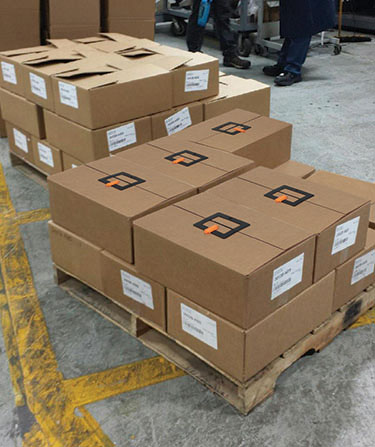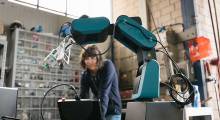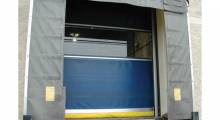At ProMat, Eco-Latch Systems debuted its Box Latch “reusable and low-tech” plastic device that allows manufacturers and distributors to quickly and securely hold the top flaps of a corrugated cardboard box closed. The response by visitors to the booth was “jaw-dropping,” inventor and chief operating officer Jack Wilson recalls.
“I’m interested in sustainability, and when I learned that 90% of corrugated boxes are only used once before they are sent to the landfill or recycled, I was motivated to invent a way to rapidly close and reopen boxes so they could be reused,” Wilson says.
The first of 20 different gadgets for closing boxes without tape, staples, bands, glue or overlapping and folding the corners was patented in 1907, Wilson notes, “but ours is the first one to come to market.”
Offered in multiple sizes, the Box Latch device slides onto the two flaps that meet in the middle of the box’s top. Integrated ridges and a slight pitch hold the cardboard securely, keeping the flaps closed yet still easy to open without damaging the box.
“Because the device protects the integrity of the box without damaging it as the other methods would, it can be used repeatedly,” he explains. “We’ve calculated that if just 10% of the corrugated boxes used globally were reused just 10 times, worldwide need for recycling of those boxes would be reduced by 40%.”
That reusability contributes to companies’ sustainability initiatives, particularly as they seek to reduce waste in their supply chains, Wilson adds.
“Box Latch units are ideal for closed-loop systems, work-in-process, inventory storage operations, case picking, in-store replenishment and more. Manufacturers and assemblers working within an integrated supply chain have used them when handling partial components boxed and transported within a closed loop, for example,” he says.
The device eliminates expenses associated with tape, glue and other sealing methods—as well as the need for knives to cut into sealed boxes. That reduces both the risk of product damage as well as potential worker injury, says Wilson.
“According to OSHA figures, the average direct and indirect costs for laceration injuries total $36,472, which can be eliminated by the use of our Box Latches,” he adds.
Article topics








